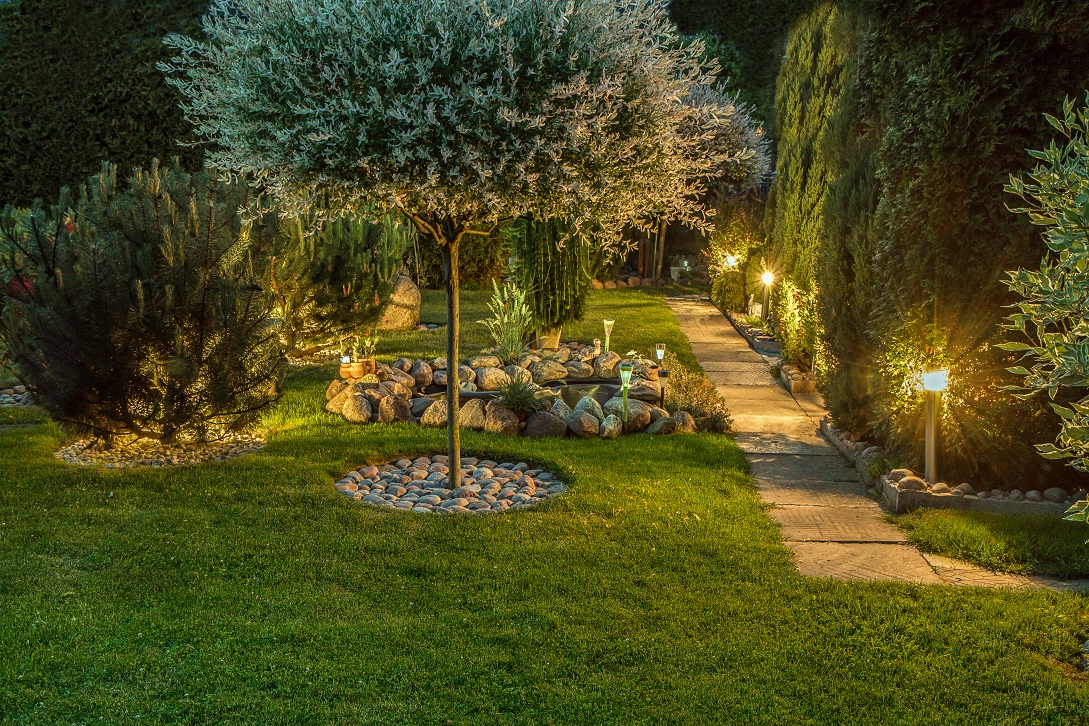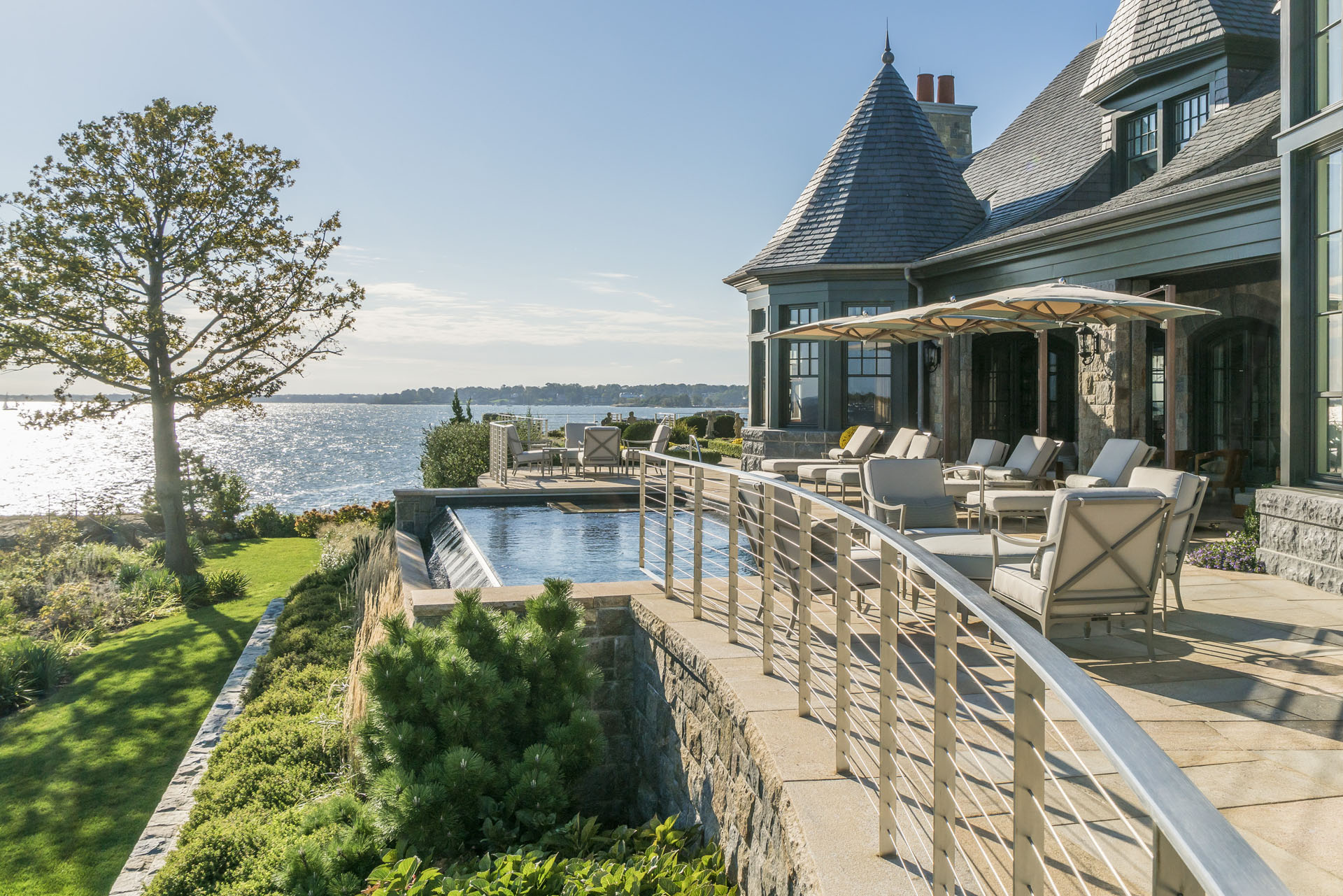If you’ve done everything you can to improve how your looks during the daytime, it’s about time you started working on its nighttime curb appeal. One of the best ways to do this is through outdoor lighting. A well-designed landscape lighting plan can highlight your home’s best architectural features in addition to your trees and plantings. Outdoor lighting also has other added benefits such as improving your home’s security and safety. It can even brighten up a party or other outdoor gathering.
What is the Best Landscape Lighting?
When you start planning your outdoor lighting, less really is more. Your eyes don’t need nearly as much light outdoors as they do indoors to identify light, patterns, and shadows. For this reason, most landscape lighting nowadays tends to be low voltage. It also helps that these systems are more inexpensive and safer to work with than typical 120-volt systems. Although low-voltage lights use about one-tenth as much power, they can still create very effective lighting schemes.
How to Get Started
The best way to put together a blueprint for your outdoor lighting is to scout out your property. Walk around your property in the evening to figure out how you want your outdoor space to look at this time. Afterwards, you can start planning your lighting to fit your vision. Keep in mind some of the following landscape lighting ideas when you are ready to select the fixtures and layout that will show off your property in the best light after dark.
Outdoor Lighting Differs from Indoor Lighting
It’s important to remember that working with outdoor lighting involves different challenges than indoor lighting. Reflection, for instance, isn’t really a concern at night because most surfaces are dark and do not reflect light. On the other hand, glare can be a problem, so you need to take into account shielding and lighting position to keep it to a minimum.
If a light is too large or bright, the glare can be blinding because it reflects directly in people’s eyes. Therefore, you need to be aware of the difference between direct and indirect light when planning outdoor lighting. Direct light such as a light outside a side entry door will illuminate the object at which it is directed and little else. Indirect light, however, reflects on nearby surfaces to create more of an even wash.
Landscape Lighting Placement
One of the most critical aspects of landscape lighting is its placement. In order for it to be effective, there are a number of areas that you should focus upon. They include the following:
Entryways: lights should be placed either on each side of a door or overhead for front, back, and side entry doors.
Steps: lighting steps is very important for safety reasons. You can choose to light either the risers or the treads.
Paths: a well-lit path serves the double purpose of welcoming your visitor and making the walk more secure. You can use downlights to prevent glare. Individually lit pavers are also a nice touch.
Decks or patios: it often helps to light a specific area of a deck or patio such as an outdoor kitchen or a grill. You can also direct it towards a seating area.
Driveway: low-voltage lighting is an appropriate choice to illuminate a driveway.
Gazebos or Trellises: landscape lighting is also a great way to draw attention to interesting garden structures such as gazebos or trellises.
So, pay close attention to these elements for landscape lighting that both enhances the look of your property at night and serves a number of useful functions.





